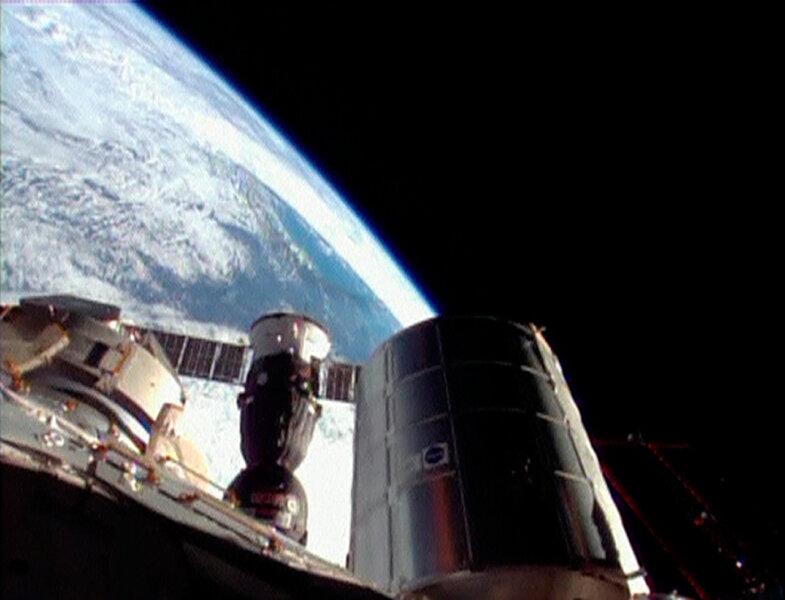Space station stays cool with just one pump, but 'we're somewhat vulnerable'
NASA engineers are trying to figure out how to fix a cooling pump aboard the International Space Station after it malfunctioned on Wednesday.
The malfunction has prompted NASA to consider postponing next week's space-station resupply mission. That mission, conducted by Orbital Sciences Corp., currently is scheduled for launch from Virginia's Wallops Island Dec. 18. Mission managers are giving engineers through the weekend to troubleshoot the problem before deciding what to do about next Wednesday's launch.
The problem doesn't immediately threaten the safety of the six-member crew, NASA said in a statement Wednesday. The station can operate at a reduced level if only one of its two key external cooling loops works. But that leaves no Plan B if the second loop fails.
“Our best position would be to have both of those loops up and running and available to us,” said Kenneth Todd, the station's mission operations and integrations manager during a televised update on the situation Thursday. “While we're sitting at one loop, we're somewhat vulnerable.”
The station sheds heat – generated by its electrical systems, life-support systems, and lab equipment – through two cooling systems, each serving a different cluster of modules. Each system consists of loops inside the modules that circulate water to take up heat.
Heat exchangers transfer the heat to one of two ammonia-filled loops that carry the heat out of the modules to radiators mounted on the truss – a structure the length of a football field that supports the station's solar arrays, its heat radiators, and serves as a storage rack for large spare parts.
On Wednesday, the pump for one of these external loops, Loop A, shut down after sensors recorded temperatures for the system's ammonia coolant that were too low. The concern: If excessively cool ammonia returns to the heat exchanger inside the station, it would freeze the water flowing through the other side of the exchanger, blocking coolant flow for the internal cooling system.
The problem prompted controllers to reconfigure the station's cooling system so that Loop B also served systems once tied into Loop A. But that also required the station crew to shut down nonessential systems in three of the station's modules to keep from overworking the remaining loop.
The shutdown affects the Japanese and European laboratories, as well as America's Harmony module. Harmony serves as a crossroad for access to those labs as well as a utility room, routing electricity and coolant to the US, Japanese, and European modules.
Engineers traced the problem to a valve that controls the flow of ammonia as a means to regulate the coolant's temperature. After the engineers sidelined Loop A, they restarted it and plan to cycle the valve several times Thursday in an attempt to figure out what went wrong, Mr. Todd said.
If engineers can resolve the problem with software changes, Loop A could be restored fairly quickly, NASA spokespeople have said. If it's a hardware problem, mission managers will have to plan a spacewalk to deal with it. The ISS has three spare pumps bolted to the station's truss.
In 2010, another cooling pump for Loop A failed completely and had to be replaced. The space shuttle Atlantis brought it back in 2011 so engineers could analyze the failure.
In this case, the pump still operates, Todd said, but it is not controlling coolant temperatures as expected.
As for the resupply mission, none of its cargo is so essential that the launch date can't slip, Todd said.
“At this point, for lack of a better word, we're going to kick the can for a little bit and go let the team work a little bit more” before deciding whether to launch Orbital's Antares rocket with its Cygnus cargo capsule as scheduled, he said.






